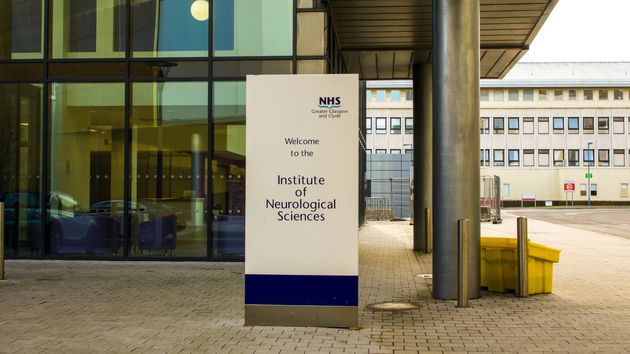
The deaths of a child and an adult after contracting an infection linked to pigeon droppings has prompted a review at Scotland’s flagship hospital.
Scottish health secretary Jeane Freeman confirmed a post-mortem examination carried out on the youngster showed the Cryptococcus bacteria was a contributory factor in their death.
Earlier, an elderly patient at Glasgow’s Queen Elizabeth University Hospital was also found to have an infection caused by inhaling the fungus Cryptococcus, which is primarily found in soil and pigeon droppings, but Freeman confirmed it did not contribute to their death.
Pigeon droppings appeared in a plant room on the hospital’s rooftop via a small break in the wall, which was “invisible to the naked eye”, Freeman said.
Adding it was still unclear how the bacteria had entered the ventilation system, she said a review would be carried out in the design, build, handover and maintenance of the flagship hospital.
It was built for the Scottish Government at a cost of some £842m and opened at the end of April 2015.
Despite the hospital having only recently been constructed, Freeman said there appeared to be a “number of instances” where the fabric of building was “less than satisfactory”.
After visiting the hospital on Tuesday morning, the health secretary said: “I have agreed a review, with external expert advice, that will look at the design of the building, the commissioning of the work, the construction of the building, the handover of the building and the maintenance of the building, in order to ensure we identify where issues were raised that should have been addressed and where maintenance programmes now should be perhaps more robust or more frequent.”
Freeman announced the review after setting out “clear factual points” on the two patient deaths to MSPs at Holyrood.
She said the Cryptococcus bacteria had initially been identified in one patient in November 2018 but was not linked to that person’s death the following month.
Freeman added: “In December a post-mortem of a child who has passed away conformed that Cryptococcus was both present and a contributory factor in their death.”
She explained the second case triggered the introduction of additional infection control measures by NHS Greater Glasgow and Clyde, including prescribing anti-fungal medication to “vulnerable patients” and the provision of additional air filters.
“I am confident the board have taken all the steps they should to ensure and maintain patient safety,” she said.
Labour health spokeswoman Monica Lennon said the public would be “shocked” to learn one of those who had died was a child as she claimed there had been a “complete lack of clarity” from the health board about the infection.
Lennon said: “I think the people of Scotland will feel it is absolutely extraordinary that in a modern hospital, Scotland’s flagship and apparently super hospital no less, we have a situation where pigeons and infections can kill patients.
“If this unthinkable and deadly infection can happen at the flagship Queen Elizabeth, what is to stop it happening at other hospitals?”
The Labour MSP pressed Freeman on when the Scottish Government had been alerted to the issue, after reports an outpatient had contacted previous health secretary Shona Robison in March 2018 regarding problems with pigeons at the hospital.
Freeman said a thorough search of records by both the government and staff at Robison’s constituency office had found no trace of this letter.
The health secretary said: “The government was first informed of the Cryptococcus infection in two patients on December 21.
“That was the right time for the government to be informed because it was the post-mortem following the death of the child that identified the second case, and that second case is the trigger then for additional infection control action, therefore we were rightly informed.”